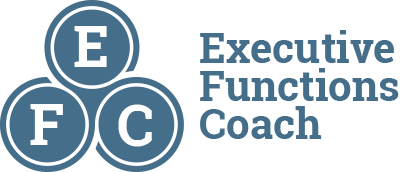Improve Time Blocking for Better Focus & Productivity
Whenever I bring up time blocking to one of my clients, I get the same pushback. “I don’t want to feel limited to what I have to do at specific times.” “That sort of structure will make me feel like I am in jail.” “If we do a block schedule, it will just feel like school, and I hate school.” It is very normal for my clients that struggle with structure to think about structuring their day. Individuals that struggle with executive functions are neurologically wired in a way that voluntary structure is painful. What do I mean by this? If someone has school, the time block planning that is involved is forced. Eventually, it just feels like the normal flow of the day. However, if they are asked to do time blocking themselves, they are in charge of their own accountability, and it becomes near impossible.
The Reasoning Behind Why Time Blocking Works
How do I help my clients overcome the psychological hurdle of time blocking doesn’t work? When an individual has executive functions deficits, tasks like initiating, planning, blocking off distractions, and time management are really difficult. These tasks are especially difficult when they don’t see the point of it. They know that doing a block schedule will be challenging and frustrating to deal with, so why deal with it if it is not going to help? This is where a metacognitive approach to understanding time block planning is important. Let’s think about what part of time management and planning is frustrating. I would argue that for the majority of my clients, it is the activity of deciding what to do. Deciding what block schedule makes sense and what to do during those blocks.
Isn’t it easier to just go with the flow and not have to think about things in terms of time blocking? Yes, it is definitely a lot easier. However, from experience, I notice that going with the flow leads to two distinct paths. First if you are fortunate, going with a flow generally leads to a routine. The flow resembles a block schedule. Our brain loves routine because a routine means that we don’t have to think about what to do next.
The second path is that going with the flow leads to distractions from what you want to accomplish. Deadlines are missed. Media becomes an escape rather than pleasure. There is a desire for time block planning even though no one wants to admit it. You wish you could follow structure, get things done, and be productive. You desire to be like the people that can find their flow. Time blocking is what you want, but you just don’t want to call it that.
How Can We Create a Block Schedule that Works for Us?
So hopefully, we can see that time blocking works and we all would love to find a routine that we can stick to. So how do we do this? Well finding a block schedule that works for you is all about optimizing your schedule for the best flow. When we have good flow, we are focused, productive, and most importantly, happy. What I like to do with my clients is to take a survey of their current schedule. List out all of their fixed obligations. The existing structure that we can use as their building blocks for our time block planning. For some of us, this might be school, it might be work, or it might be taking our kids to school. We want to take our fixed obligations and put them on our calendar so we can visualize our time.
Next, I ask my clients to think about times that make sense for their meals, meal prep, and daily exercise. These will go into our block schedule as the bare essentials for our mental health. At this point, I always introduce the most important part of time blocking: cognitive flexibility. One of the biggest complaints and what generally leads to time block planning to be unsuccessful is the feeling of forcing a schedule. Let’s acknowledge that following a plan can be painful as sometimes we just don’t feel like it. However, it is also important to distinguish that with the fact that things don’t always go according to plan. This is why cognitive flexibility is so important to time blocking. What I like to do is have my clients reflect with me on what changed in their plans and why they had to change. It’s okay to move around their bare essentials if that is what worked out the best for their block schedule.
Time Block Planning Your Goals
Here comes the fun part of time blocking. Now that we have covered the fixed blocks and bare necessities, let’s begin to look at our schedule and think about what time we can fit in for goals. In the initial stages of creating a block schedule, I like to keep the category as broad as goals. Naturally, I would work on creating a list of goals and steps for each goal with my clients. However, it is important to create some flexibility with the category. If time blocking is hard and feels limiting, let’s allow space for autonomy for what you chose to do during your productive blocks. This flexibility in time block planning gives my clients the chance to establish their flow in their endeavors.
The Most Critical Part of Creating a Block Schedule
In case it was missed, the most critical part of creating a long-lasting block schedule is cognitive flexibility. Oftentimes, individuals with executive functioning challenges find it hard when their plans don’t work out. It can be discouraging and very frustrating. It often leads them to ask the question “why did I spend so much effort time block planning if I wasn’t going to follow it.” Remember that finding our flow is a work in progress. Whenever time blocking doesn’t go according to plan, take the time to reflect. What happened and did things work out for the best. How can I better incorporate this to my block schedule next time? Oftentimes, it is really helpful to reflect with an executive functions coach or someone in your support system. Remember that you are not on this journey alone.
Ready To Take Control of Your Time and Boost Your Productivity?
Schedule a free consultation to explore how time blocking can transform your daily life. Discover the power of flexibility and structure working together to achieve your goals.


